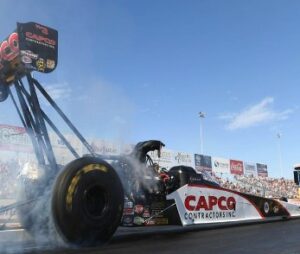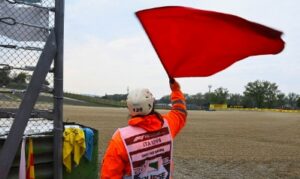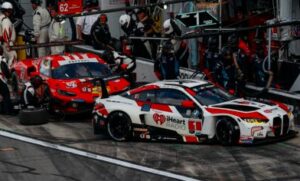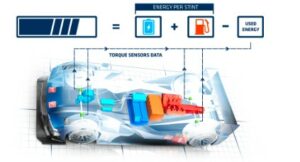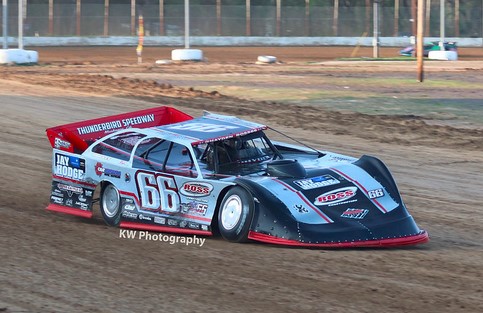
Motorsports, including events at Thunderbird Speedway, are thrilling spectacles that combine speed and skill. While the focus is often on the fierce competition, behind the scenes, a dedicated group of professionals works tirelessly to ensure safety runs as a core principle in the world of motorsports. In this comprehensive guide, we will explore the critical role of safety in motorsports, how it has evolved over the years, and the individuals and organizations that make it possible.

The Evolution of Safety in Motorsports
- Historical Perspective: Motorsports have a storied history, and safety was not always a top priority. Early racing events lacked the protective measures and safety innovations that are now standard.
- Tragedies as Catalysts: Tragic accidents, such as the 1955 Le Mans disaster and the death of Ayrton Senna in 1994, played pivotal roles in driving improvements in motorsports safety.
- Innovations in Vehicle Design: Vehicle design has evolved significantly to enhance safety. Improvements include reinforced roll cages, energy-absorbing barriers, and the introduction of the HANS device.
- Driver Gear: The safety gear worn by drivers, such as helmets, fire-resistant suits, and gloves, has undergone continuous improvement to provide better protection.
- Spectator Safety: Measures have been implemented to protect spectators, including fencing and barriers to prevent debris from reaching the stands.
Key Players in Safety
- Fédération Internationale de l’Automobile (FIA): The FIA is the governing body for motorsports worldwide. It plays a central role in establishing safety standards, regulations, and overseeing safety research.
- Safety Crews: Each racing event has dedicated safety crews, often known as the “safety team” or “safety crew.” These professionals are trained to respond quickly to accidents and provide immediate medical assistance.
- Track Designers and Engineers: Those responsible for designing and engineering racetracks focus on creating circuits that minimize risks and provide safe runoff areas.
- Medical Teams: Motorsports events are equipped with experienced medical teams and ambulances to address driver injuries promptly.
- Safety Advocates: Numerous safety advocates, organizations, and researchers work to advance safety measures in motorsports.
Safety Measures at Thunderbird Speedway
Thunderbird Speedway, like other racing venues, emphasizes safety as a top priority. Several safety measures are implemented at the track:
- Safety Barriers: The track is lined with impact-absorbing barriers, designed to reduce the force of impact in the event of a collision.
- Vehicle Inspections: All participating vehicles undergo rigorous safety inspections to ensure they meet the track’s safety standards.
- Safety Crew: The speedway employs a dedicated safety crew ready to respond quickly in case of accidents and provide immediate medical attention.
- Spectator Areas: The track’s spectator areas are designed with safety in mind, including barriers and distance from the racing action.
The Role of Data and Technology
- Telemetry: Advanced telemetry systems provide real-time data on vehicle performance, allowing teams to monitor vital parameters and identify potential issues.
- Crash Analysis: In the event of an accident, crash data goes for analysis to understand the forces leading to the crash and enhance safety measures.
- Simulations: Safety simulations and modeling serve to predict and mitigate potential risks.
- Innovative Materials: Advanced materials, such as carbon fiber, are used in vehicle construction to increase strength and reduce weight.
- Remote Monitoring: Remote monitoring technology allows officials to observe race conditions and react quickly to incidents.
Challenges in Ensuring Safety
- High Speeds: The very nature of motorsports involves high speeds, which present inherent risks.
- Unpredictable Factors: Variables like weather conditions, mechanical failures, and driver error can lead to unexpected accidents.
- Balancing Speed and Safety: Motorsports aim to maintain the excitement of speed while implementing safety measures that mitigate potential hazards.
- Continual Improvement: The motorsports industry must remain vigilant and committed to continuous safety improvements.
The Impact of Safety Innovations
- Lives Saved: The implementation of safety measures and innovations has saved countless lives in motorsports.
- Influence Beyond Racing: Safety innovations developed in motorsports have often influenced safety measures in consumer vehicles.
- Positive Public Perception: Commitment to safety enhances the public perception of motorsports and attracts fans and sponsors.
- Driver Confidence: Knowing that extensive safety measures are in place allows drivers to focus on their performance without unnecessary worry.
The Future of Safety in Motorsports
- Technology Integration: Technology, such as driver-assist systems and autonomous safety features, may play a more significant role in motorsports.
- Eco-Friendly Innovations: Safety advancements may come in with environmental considerations, promoting both driver safety and eco-conscious racing.
- Global Standardization: Efforts to standardize safety measures across different racing series and regions may continue to evolve.
- Improved Fan Experience: Ensuring spectator safety while maintaining an enjoyable fan experience is likely to remain a focus.
Conclusion
Safety is the silent hero of motorsports, working tirelessly behind the scenes to protect drivers, teams, and fans. The evolution of safety measures in the racing world has been significant, driven by historical tragedies and innovative minds. The commitment to safety at tracks like Thunderbird Speedway is unwavering, with measures in place to protect all involved. While challenges persist, advancements in technology, data analysis, and safety innovations continue to shape the future of safety in motorsports. As the sport races forward, it does so with a guardian angel on wheels, ensuring that safety always runs alongside the need for speed and competition.


